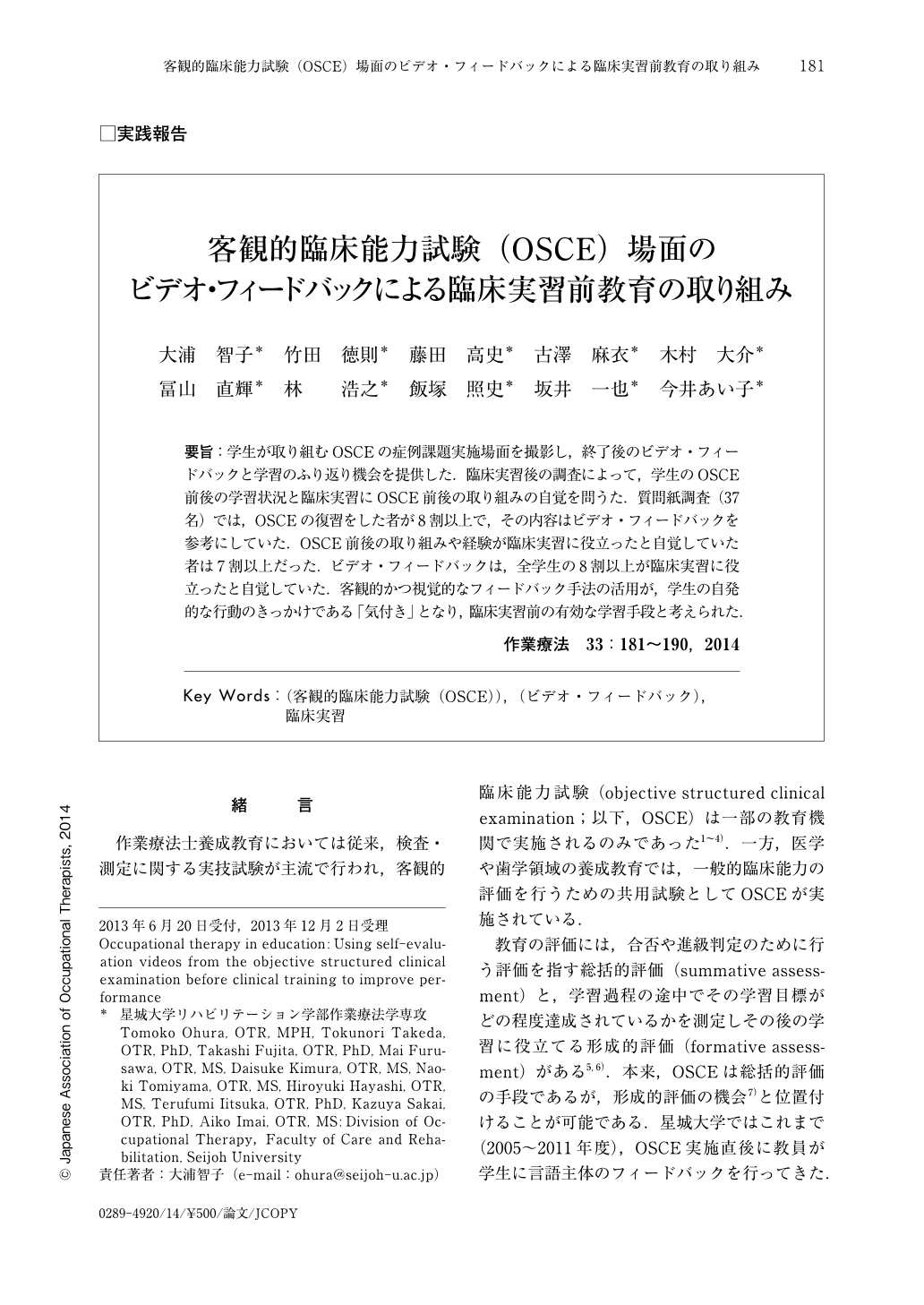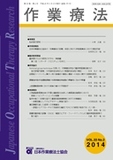Japanese
English
- 販売していません
- Abstract 文献概要
- 1ページ目 Look Inside
- 参考文献 Reference
- サイト内被引用 Cited by
要旨:学生が取り組むOSCEの症例課題実施場面を撮影し,終了後のビデオ・フィードバックと学習のふり返り機会を提供した.臨床実習後の調査によって,学生のOSCE前後の学習状況と臨床実習にOSCE前後の取り組みの自覚を問うた.質問紙調査(37名)では,OSCEの復習をした者が8割以上で,その内容はビデオ・フィードバックを参考にしていた.OSCE前後の取り組みや経験が臨床実習に役立ったと自覚していた者は7割以上だった.ビデオ・フィードバックは,全学生の8割以上が臨床実習に役立ったと自覚していた.客観的かつ視覚的なフィードバック手法の活用が,学生の自発的な行動のきっかけである「気付き」となり,臨床実習前の有効な学習手段と考えられた.
The efficacy of whether watching videos of the objective structured clinical examination (OSCE) and doing self-evaluation gave occupational therapy students an awareness of their performance and whether the students found the videos useful was examined. Thirty-seven students completed a survey on the OSCE after clinical training at a hospital or other healthcare facility. The results show that over 80% of the students referred to the self evaluation of their OSCE video for details of their performance. Additionally, over 70% of the students felt that their studies before and after the OSCE and the experience gained during the OSCE were useful in clinical training, and over 80% acknowledged that the self evaluation of their OSCE video was useful in clinical training. These results suggest that visual evaluation from watching an OSCE video gave students an “awareness” that allowed them to think and act quickly during examinations and was an effective pre-clinical training learning resource.

Copyright © 2014, Japanese Association of Occupational Therapists. All rights reserved.


